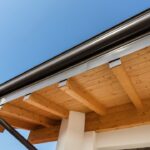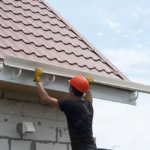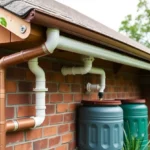When it comes to maintaining a home, one of the most important aspects is the condition of the roof. An issue that many homeowners face is roof sagging, but the question often arises how much roof sag is acceptable? Understanding and addressing this can mean the difference between minor repairs and a complete roof replacement.

What is Roof Sag?
Roof sag occurs when the structure loses its ability to maintain its original shape under the weight of roofing materials or due to other factors. This sagging can be noticed by dips or curves on the roofs surface.
Causes of Roof Sagging
- Excessive weight from snow or ice
- Inadequate roof structure
- Deterioration of supporting beams
- Age of the roof
Identifying Acceptable Roof Sag Levels
Understanding how much roof sag is acceptable begins with recognizing that some minimal sag might not be cause for concern. However, notable sagging could indicate structural issues.
Key Indicators of Excessive Roof Sag
If your roof displays any noticeable dips, is missing shingles, or has discolored areas due to water pooling, it could indicate excessive sagging. Regular inspections can help identify these issues early.
When to Worry About Roof Sag?
A roof sagging more than 1 inch over a 20-foot span can be an indicator of structural problems. Its crucial to have these evaluated by a professional.
Risks of Ignoring Roof Sag
- Increased risk of leaks
- Structural instability leading to potential collapse
- Decreased property value
Steps for Assessing Roof Sag
Inspecting the roof regularly can help in identifying sag and mitigating risks before they escalate. Its essential to understand how much roof sag is acceptable to manage maintenance effectively.
Conducting a Homeowner Inspection
Start by looking for missing shingles, cracks, or water stains on internal ceilings. Engage with professionals for more detailed assessments.
Roofing Technologies for Tackling Sag
Advancements in roofing technology provide efficient solutions for addressing sag, such as improved building materials and design techniques.
Modern Roofing Materials
Utilize lightweight but durable materials that do not compromise the roof’s integrity under environmental stress.
Consulting Professionals
Seek advice from qualified roofing experts to determine the most effective approach to tackle any observed sagging.
Renovation and Repair Approaches
If significant sag is detected, its crucial to consult with structural engineers or roofing specialists to devise a repair strategy.
Approved Methods for Fixing Sag
Methods such as adding supports, replacing compromised beams, or completely re-roofing may be recommended depending on the extent of sag.
What Homeowners Should Consider
Alongside understanding how much roof sag is acceptable, homeowners should enhance their knowledge on roof maintenance and protective actions.
Protective Measures
Implement regular inspections and maintenance, including clearing debris and ensuring gutters are free from obstructions, which helps prevent additional weight.

FAQs on Roof Sag and Safety
What causes roof sag?
Various factors including age, weather, and inadequate support contribute to roof sagging.
How can I prevent roof sag?
Regular roof inspection and maintenance, using appropriate materials and adequate insulation can help prevent sag.
Does roof sag always require professional intervention?
Minor sag might not need extensive repair, but it’s beneficial to get professional advice to avoid future complications.
With an awareness of what to look for and timely interventions, homeowners can maintain the integrity of their roofs, minimizing risks and ensuring the safety and value of their homes. For comprehensive insights on roof replacement costs, visit Rated People.
This article contains affiliate links. We may earn a commission at no extra cost to you.







